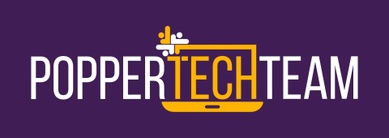The cloud gives you the flexibility to run your business from anywhere, the efficiency to enhance your team’s performance and a strategic edge to stay ahead of competitors without a huge cost.
But here’s the thing—it’s not all sunshine and rainbows. Business on the cloud carries risks that cannot be ignored.
Business owners often have this misconception that once their data is in the cloud, it’s fully protected by the cloud service provider. But that’s not quite how it works. Instead, it’s more o fa team effort, and you have a crucial role to play.
The shared responsibility model
When it comes to securing cloud data, both the cloud service provider and the customer have specific responsibilities they are obligated to fulfill. This cloud security practice is called the shared responsibility model.
However, if you don’t know which security tasks are your responsibility, there maybe gaps that leave you vulnerable without you realizing it.
The trick to keeping your cloud secure is knowing where the cloud provider’s job ends and yours begins. This starts with analyzing your agreement to understand what specific security roles are with the provider and what remains within your purview.
What’s your responsibility?
While every cloud provider may be different, here’s a simple break down of what you’re likely to be responsible for:
1.Your data: Just because your files are in the cloud doesn’t mean they’re automatically protected.
What you must do:
- Encrypt sensitive files to make it difficult for hackers to read them if they were stolen.
- Set access controls to limit users from viewing privileged information.
- Back up critical data to ensure business continuity.
2.Your applications: If you use any cloud apps, you are responsible for securing them as well.
What you must do:
- Limit third-party app access to reduce the chances of unauthorized logins.
- Monitor for unusual activity to prevent potential data breaches.
3.Your credentials: You can’t secure your accounts using weak passwords.
What you must do:
- Enforce strong password protocols to prevent unauthorized access.
- Use multi-factor authentication as an extra precautionary step.
- Implement policies that limit access based on roles and responsibilities.
4.Your configurations: You’re responsible for setting configurations up correctly and monitoring them regularly.
What you must do:
- Disable public access to storage to prevent outsiders from accessing your files.
- Set up activity logs so you know who’s doing what in your cloud.
- Regularly audit permissions to ensure only the right users have access.
Take charge without worry!
You don’t need to be an IT expert to secure your business in the cloud—you just need the right people. As an experienced IT service provider, we understand your challenges. Whether it’s protecting your customer data or setting up configurations properly, we know how to do it right. We help you turn your cloud into a safe haven so you can focus on growing your business instead of worrying about tech.
Contact us for a free, no-obligation consultation.
